Galen Watson's Blog: The Psalter
November 8, 2014
Let's Party Like it's 1864! - Honest Abe's Imagination Celebration
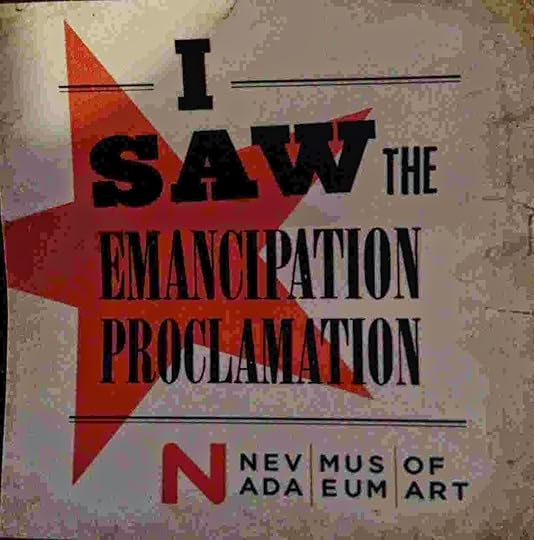 The Nevada Museum of Art in Reno hosted a steampunk-themed party Saturday, November 1, to celebrate the State’s sesquicentennial anniversary. Nevada became the 36th state on October 31, 1864, just days before Abraham Lincoln’s November 8 presidential re-election. The four story museum was transformed into party central, with bars and sweet and savory hors d’oeuvres on three of its four levels. El Radio Fantastique rocked the ground level with a Halloween- and Steampunk-themed show, featuring genre-defying music that seemed to be a dreamlike, 19th century, modern rock fusion.
The Nevada Museum of Art in Reno hosted a steampunk-themed party Saturday, November 1, to celebrate the State’s sesquicentennial anniversary. Nevada became the 36th state on October 31, 1864, just days before Abraham Lincoln’s November 8 presidential re-election. The four story museum was transformed into party central, with bars and sweet and savory hors d’oeuvres on three of its four levels. El Radio Fantastique rocked the ground level with a Halloween- and Steampunk-themed show, featuring genre-defying music that seemed to be a dreamlike, 19th century, modern rock fusion.While a party atmosphere reigned throughout most of the museum, the second floor held a solemn calm, in marked contrast to the high-spirited revelry. On exhibition for four days, the original Emancipation Proclamation was on loan from the National Archives. Partiers paused from merrymaking to queue up for a glimpse at one of the most important documents in American history. It’s a rare viewing, since the fragile and faded proclamation can only be shown in very dim light for a mere 48 hours per year. The Nevada Museum of Art has it for 36 of those hours. Also on display for the first time were Civil War muster rolls from the cavalry and infantry stationed at Fort Churchill, as well as period photographs.
The party ended at 11 pm; and band members—led by a high-stepping, Effie Trinket-garbed museum staffer--marched a few blocks to Tavern 1864, with revelers in tow dancing in the street. The band played outside in the chill autumn air while patrons bellied up to the bar. An animated crowd chatted and laughed in steampunk attire. Yet through the cacophony, my eye was drawn to the wall facing me. A photograph of Abraham Lincoln stared back beneath a pleated fan of red, white and blue; and I pondered America’s 16th president: the signer of the fading Emancipation Proclamation I had just witnessed.

Lincoln had long been a vocal opponent of slavery. He proclaimed in the 1850’s that it was “an unqualified evil to the negro, the white man, and the State.” And, his response to his opponent Stephen A. Douglas’ draft of the Kansas-Nebraska Act that allowed settlers to decide whether they would expand slavery was just as pointed: “I cannot but hate it. I hate it because of the monstrous injustice of slavery itself.” Yet, in his first address to Congress in the summer of 1861, Lincoln reassured the assembly that he had “no purpose, directly or indirectly, to interfere with slavery in the States where it exists.” Why the apparent contradiction? The answer lies in the pandemic support for slavery, not just in Southern States, but Border States, and southern sympathizers in the North. Lincoln was compelled to navigate a minefield, if the Union was to be preserved.
It might be hard to imagine today—unless you live in the South--but Lincoln wasn’t a popular candidate in 1860 even in some Northern States, particularly the Midwest. He won his first presidential race with only 40% of the popular vote, although the Electoral College was decisive. Southern States were outraged. Even before he took office, secessionists made clear their intent to leave the Union; and assassination plots were already being hatched. Lincoln was forced to travel to Washington DC in disguise, and placed under a military guard for protection.
For Southern States, Lincoln’s election spelled disaster. They were a mostly agrarian economy--primarily cotton and tobacco--and heavily dependent on slave labor. The slave population had exploded in the South by 1860, and was 57% of the population in South Carolina! Most of the South’s capital was invested in cotton land and slaves, and banks used them as collateral for debt. The mere idea of emancipation was tantamount to financial destruction for the 45,000 planters who owned over half of the slaves, as well as the banks that financed them.
Even Christians in America were bitterly divided. Southern churches justified enslavement, arguing that Abraham had slaves, and the Ten Commandments given by God proclaimed, "Thou shalt not covet…his manservant, nor his maidservant…." The Apostle Paul returned a runaway slave to his owner, and even Jesus never spoke out against slavery. On the other side, Christian abolitionists--the largest part of Lincoln’s Republican constituency--condemned slavery and demanded an end to the vile institution. Pope Gregory XVI condemned the slave trade in a Papal Bull in 1839. Northern Methodists and Quakers had long been in the vanguard to put an end to slavery, and the founder of Methodism, John Wesley, believed “slavery was one of the greatest evils that a Christian should fight.” But Southern Methodists didn’t agree, and the protestant sect divided in 1850. Southern Presbyterians also broke away in their religious support for slavery. Likewise, Baptists in the south defended slavery, and separated to form Southern Baptists
This was the bitter atmosphere in the fragile union of the United States, as newly-elected President Abraham Lincoln stepped to the podium to deliver his first inaugural address. He begged the South for unity as a country, even if they weren't in agreement: "We are not enemies, but friends. We must not be enemies….” Lincoln’s words fell on deaf ears in Southern States. They formed their own Confederate States of America, drafted a constitution, and General Pierre Beauregard opened fire on the Union Army at Fort Sumpter, South Carolina. The Civil War had begun.
It’s often a small thing in the course of human events that goes viral and changes history. A pro-slave lawyer turned Union General, Benjamin Franklin Butler, occupied Fort Monroe in Virginia in May of 1861, when three slaves escaped from their labor constructing Rebel fortifications. Despite the law requiring him to return slaves to their lawful masters, Butler used his legal mind to reason that since their efforts aided the enemy, and since they were property, he declared them “contraband,” and refused. News of Butler’s refusal spread like wildfire, and slaves escaped their oppressors by the thousands for Union lines and protection as “contrabands.” Congress passed a wartime confiscation act that gave slaves who had been forced to aid the Confederate war effort “contraband” status, and forbade army officers from returning them to their masters.
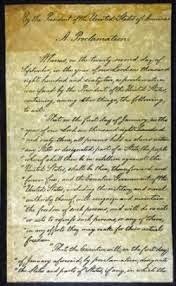
The Union suffered a disturbing string of defeats in the summer of 1862, and the military strategy of emancipation to weaken the South’s war machine grew increasingly persuasive. Congress passed a second confiscation act, giving safe haven to runaway slaves. A militia act allowed freed slaves to serve in the Army. But Lincoln grasped that what began as a military strategy to weaken the South could be much bolder and far-reaching than anyone imagined. He planned to free all slaves in states waging war against the United States; and he would sell the idea as a military necessity. On January 1, 1863 President Lincoln, as Commander in Chief, issued the Emancipation Proclamation, declaring slaves held in states still in rebellion “then, thenceforward, and forever free.”
The wartime proclamation didn’t apply to border slave states or states controlled by the Union, however. And, Lincoln and the abolitionists in the Republican Party knew his wartime proclamation would have no Constitutional legality at the end of the war. So, Radical Republicans drafted a Constitutional Amendment proclaiming, “Neither slavery nor involuntary servitude,…shall exist within the United States, or any place subject to their jurisdiction.” President Lincoln made the 13th Amendment his top legislative priority, and it was finally ratified by three quarters of the states and adopted on December 18, 1865.
Tragically, Lincoln didn’t live to see the adoption of the Thirteenth Amendment. Two days after Confederate General Robert E. Lee surrendered the Army of the South, a jubilant crowd gathered in front of the White House in the misty night air, praising President Lincoln and calling on him to speak. The president stood in the window over the over the main door, pages clutched in one hand. A reporter held a lamp, so he could read his prepared words. His young son, Tad, stood by his side. But it wasn’t the sort of victory lap the assembly wanted. A gaunt, thoughtful Lincoln pleaded for re-construction and reconciliation; and he called for black suffrage, voting rights for African Americans. In the crowd, a popular actor and Confederate spy was so incensed by the very idea that he spat, “That is the last speech he will make.” Three days later, John Wilkes Booth assassinated President Abraham Lincoln at Ford’s Theater—just a year after the proposed 13th Amendment passed the senate.

I gazed at the costumed revelers crowding Tavern 1864, many of whom were garbed in Civil War uniforms or antebellum gowns. One young man was meticulously dressed as a humble private in the service of the Union Army. I imagined him posted in General Butler’s tense lines, protecting Fort Monroe as he intercepted three accidental “contrabands” that started a veritable wave of slave defiance. Then, the photograph of America’s 16th president--creator and signer of the Emancipation Proclamation--captured my gaze once again. I raised my glass in an outstretched hand to the tall, slender, bearded man who helped expiate a loathsome stain from our beloved and United States: “well done Mr. President, from a grateful nation.”
P.S. The Southern Baptist Convention adopted a resolution apologizing—at long last—for its racist origins, support for slavery, segregation, and white supremacist theology in 1995. They resolved to “to repudiate historic acts of evil, such as slavery, from which we continue to reap a bitter harvest.”
P.P.S The Methodist Church apologized for “centuries of racism”—at long last—in 2000. Bishop William Boyd Grove confessed that “Racism has lived like a malignancy in the bone marrow of this church for years…. It is high time to say we’re sorry.”
P.P.P.S. The Episcopal Church apologized for its support of slavery and institutionalized racism—at long last—in 2006. They confessed that “The Episcopal Church lent the institution of slavery its support and justification based on Scripture, and after slavery was formally abolished, the Episcopal Church continued for at least a century to support de jure and de facto segregation and discrimination,…”
Published on November 08, 2014 09:17
•
Tags:
abolition, abraham-lincoln, civil-war, contraband, emancipation-proclamation, episcopalians, nevada-day, nevada-museum-of-art, reno, slavery, southern-baptists-methodists, steampunk, thirteenth-amendment
June 6, 2014
D-Day Plus 70 Years
 I was an exchange student in 1969, not far from Omaha Beach, and visited it for the first time that summer. Since then, I’ve been back many times, to stroll the beach and visit the American military cemetery at Colleville-sur-Mer. It has a special meaning for me, like many of my generation who had uncles or fathers who landed on that dreadful strip of sand.
I was an exchange student in 1969, not far from Omaha Beach, and visited it for the first time that summer. Since then, I’ve been back many times, to stroll the beach and visit the American military cemetery at Colleville-sur-Mer. It has a special meaning for me, like many of my generation who had uncles or fathers who landed on that dreadful strip of sand.Many recognize the endless rows of white marble crosses on a field of green, indelibly ingrained in our culture by ‘Saving Private Ryan.’ Most Americans, however, don’t know that the land for the cemetery was given to America by a grateful French people. Or, that the cemetery operation is funded by private donations from the French people, and staffed by French volunteers.
I usually post a photo on June 6 that most expresses how I feel when I’m there. I won't be there this summer; I will be in the fall. However, this year I’d like to share what one Omaha Beach veteran--matured by battle, decades, and reflection--said to President Obama.
http://www.thedailybeast.com/articles...
Published on June 06, 2014 22:24
•
Tags:
colleville-sur-mer, d-day, normandy-invasion, omaha-beach
April 12, 2014
The Gospel of Jesus' Wife
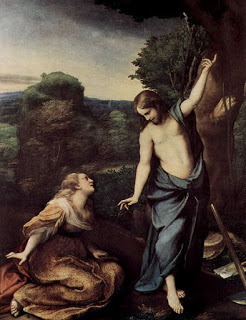 I posted this blog September 30, 2012, after Doctor Karen King announced the discovery of a papyrus fragment that seemed to show Jesus was married. Critics at the time, including the Vatican, claimed the scriptural fragment was a clumsy, modern fake. However, with the news release this week that radio carbon dating shows the papyrus fragment is not a modern fake, and micro-Raman spectroscopy determined ‘the carbon character of the ink matched samples of other papyri that date from the first to eighth centuries CE,’ I’m re-posting it. Some religious critics will undoubtedly dispute the scientific findings; nevertheless, the scripture fragment sheds light on the diversity of early Christian belief.
I posted this blog September 30, 2012, after Doctor Karen King announced the discovery of a papyrus fragment that seemed to show Jesus was married. Critics at the time, including the Vatican, claimed the scriptural fragment was a clumsy, modern fake. However, with the news release this week that radio carbon dating shows the papyrus fragment is not a modern fake, and micro-Raman spectroscopy determined ‘the carbon character of the ink matched samples of other papyri that date from the first to eighth centuries CE,’ I’m re-posting it. Some religious critics will undoubtedly dispute the scientific findings; nevertheless, the scripture fragment sheds light on the diversity of early Christian belief.The Gospel of Jesus' Wife 9/30/2012
Doctor Karen King of the Harvard Divinity School rocked the religious world last week when she presented a papyrus fragment that seemed to show Jesus was married. The fragment, written in Coptic, hinted that Mary Magdalene might be the wife. Doctor King also offered a scholarly paper outlining her research of the document.
Conservative religious scholars and groups, including the Vatican, immediately piled on with assertions that the fragment was a clumsy modern fake. Of course, they made those claims without testing the authenticity of the papyrus or the ink. Religious groups even began leaking [read fabricating] rumors to the press that the Harvard Theological Review would not publish Dr. King’s paper because of doubts about the discovery and its provenance. Dr. King stood behind her findings, and some of the naysayers hedged their accusations, claiming that even if it wasn’t a modern fake, it most certainly was a fourth-century fake. Harvard set the rumor mongers straight, confirming that they would, in fact, publish the paper in January.
One of the more reasoned objections was that the phrases used in the Gospel of Jesus’ Wife were copied from the Gospel of Thomas. Never heard of the gospel? That’s not surprising because it’s not in the Bible, but perhaps it should be. Thomas is one of the oldest scriptures—perhaps the oldest—and many Bible scholars date it even earlier than New Testament gospels. Half of its 114 scriptural sayings are repeated in Matthew, Mark, and Luke—the synoptic Gospels.
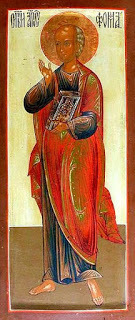 The Apostle Thomas - Russian Icon
The Apostle Thomas - Russian IconSo why didn’t the Gospel of Thomas make the Bible cut? Because in its pages, Thomas claimed that he was Jesus’ twin brother. Imagine the shivers it sent through the Council of Nicaea as Emperor Constantine demanded that attending bishops come up with a single doctrine to get their cash. That’s right -- follow the money. What the emperor offered, in exchange for settling on one Christian doctrine instead of the existing hundreds, was that Rome would pay a stipend to official priests and their churches.
Roman bishops under Constantine’s jurisdiction were already getting wealthy off Imperial stipends, and they could see it all slipping away if theirs wasn’t the agreed-upon Christianity--and Thomas just didn’t fit. Many of the Gospels could be altered to conform to the official State religion, with a few paragraphs added or deleted here and there, and altered words, but how do you explain away a twin brother? One of the characters in THE PSALTER explains the problem.
“These are the secret sayings that the living Jesus spoke and Didymos Judas Thomas recorded.”
“So?” Isabelle shrugged.
“You’re an expert in ancient Greek. How do you translate Didymos?”
Isabelle thought for a moment. “It means twin.”
“Very good, darling, but what you couldn’t know is that Thomas is the Greek spelling of the Aramaic word Te’oma, which also means twin. So Thomas’ name is really Judas the twin, twice over. Whenever they call him Thomas in the New Testament, the author is calling him the twin.”
So let me see? The Gospel of Jesus’ Wife is a fake because it’s a copy of Thomas, but Matthew, Mark, and Luke are copies of Thomas and they’re canon Gospels—however, Thomas itself is nowhere to be found. I can see why Isabelle is confused, but imagine the implications: If Mary had twins then at least one of them was Joseph’s son, so Mary and Joseph really did…well, you see where I’m going with this. As heretical as it may seem to modern Christians, for some of the earliest followers of Christ, it was gospel.
Published on April 12, 2014 13:54
•
Tags:
dr-karen-king, gospel-of-jesus-wife, gospel-of-thomas, harvard-theological-review, jesus-twin-brother, mary-magdalene
December 14, 2013
CHRISTMAS: The Multiple Personality Disorder Holiday
 Thanksgiving is over. Whew! Dishes are done; aspirin and antacid swallowed; lost football bets paid; and millions of post-feast diet resolutions promised. If you finagled Friday as a bonus day off, then you enjoyed a long weekend recovery from a tryptophan induced coma or clan overdose. Unless, of course, you weathered Black Friday swarms to get a head start on the Christmas shopping list. Now it’s time to dust off Christmas decorations, check bulbs on strings of lights, and shop for a tree. How did it come to this—the frenetic holiday season with stressed out shoppers and retail blockbuster business? Naturally, Christmas is a boon for America since most of our economy is based on consumption. It didn’t used to be that way. A generation ago, much the economy was manufacturing, but that’s long gone. We don’t make stuff anymore; we eat it. And, wasn’t there something else about Christmas that was supposed to be important? I remember now, the Christian remembrance of Jesus’ birth.
Thanksgiving is over. Whew! Dishes are done; aspirin and antacid swallowed; lost football bets paid; and millions of post-feast diet resolutions promised. If you finagled Friday as a bonus day off, then you enjoyed a long weekend recovery from a tryptophan induced coma or clan overdose. Unless, of course, you weathered Black Friday swarms to get a head start on the Christmas shopping list. Now it’s time to dust off Christmas decorations, check bulbs on strings of lights, and shop for a tree. How did it come to this—the frenetic holiday season with stressed out shoppers and retail blockbuster business? Naturally, Christmas is a boon for America since most of our economy is based on consumption. It didn’t used to be that way. A generation ago, much the economy was manufacturing, but that’s long gone. We don’t make stuff anymore; we eat it. And, wasn’t there something else about Christmas that was supposed to be important? I remember now, the Christian remembrance of Jesus’ birth.Of course, no one knows when Jesus was born; the Bible doesn’t say—not even the year. Neither do early Christian writings, although people have been trying to calculate the precise day for a few thousand years. Even scholarly, retired Pope Benedict XVI wrote that he was likely born between two and seven years earlier than his traditional birthday. In earliest Christianity, there was no celebration of Christmas, nor were birthdays even celebrated, since they were reviled as pagan rites. Third-century Christian writers Ireneus, Tertullian, and Origin of Alexandria dismissed birthday fêtes as profane, and condemned the practice. But, in about 200 A.D., Clement of Alexandria wrote that different Christian sects had placed Jesus' birth variously at May 20, March 21, April 15, April 20, and April 21. None of them mentioned December 25.
That changed, however, as Romans merged pagan holidays with the empire’s newest religion, Christianity. December 25 had long been venerated in past and contemporary pagan religions: Winter solstice, birthdays of competing God-man Mithras and Emperor Constantine’s personal favorite god, Sol Invictus (the Unconquered Sun). Romans had already identified Jesus with the sun. Fourth century Bishop Ambrose, in a dig at Sol Invictus pagans, called Jesus, ‘the true sun, who outshone the fallen gods of the old order.’ But December also happened to be a favorite religious holiday for Romans: Saturnalia—veneration of the god Saturn. It was a day of gift giving, to mark the spirit of the season. Children received toys. Wax or pottery figurines, called sigillaria, were popular gift items. Today, we call them dolls or action figures. I had a battalion of green army sigillaria when I was a kid. Emperor Augustus had a passion for gag gifts. Candles were especially popular, and they were placed around homes to symbolize fighting against darkness on the year’s shortest days. Outside lighted houses, neighbors built bonfires, drank wine from clay cups, and partied. But, after Rome’s defeat by Carthage at the Battle of Trasimene, the Empire did some soul searching. Romans worried they had lost the true meaning of Saturnalia, and displeased the God. So, many returned to the earlier, more somber Greek rite. Some things never change.
Now, I don’t know whether Christmas originated with the pagan holiday. Seems likely, and many scholarly arguments have been made supporting the link, but also against it. Nevertheless, the very first written mention of December 25 as Jesus’ birthday comes from a mid-fourth century almanac (The Philocalian Calendar) which shows the date as ‘natus Christus in Betleem Judeae’ or Christ was born in Bethlehem of Judea. It’s certainly coincidental that the 25th gets its first mention just after Constantine ended persecution of Christians in the fourth century. His favorite god was Sol Invictus, whose birthday--Dies Natalis Solis Invicti, or Birthday of the Unconquered Sun--was December 25. And, Christians were pretty grateful and deferential to Constantine for ending their piteous plight, and elevating them to a televangelist-like, wealthy, official religion; and they looked for ways to repay his kindness, including edited and idealized biographies. Just sayin’. And, in an unforeseen way, we have Emperor Constantine and the Council of Nicaea to thank for Ole’ Saint Nick.
Contrary to popular belief, the fourth-century Council of Nicaea wasn’t about church bishops gathering for an agape-type love fest, and to receive divine guidance for church doctrine. Nicaea was about Emperor Constantine uniting the Empire’s factious and fractious Christianity under a single doctrine he could enforce by law – and to try a bothersome Egyptian cleric: Arius. When a frail, 75-year old Arius stood at the council to defend himself, giant Bishop Nicholas of Myra struck him in the face and knocked him to the ground. Furious Constantine banned the violent bishop from the council. But, Nicholas’ sectarian colleagues worked feverishly to rehabilitate his ferocious image. They concocted stories that he was a kind miracle worker and secret giver of gifts, particularly to children. In no time, Bishop Nicholas was transformed from a hot-headed oaf into jolly old Saint Nick, and an enduring legend was born.
By the early Middle Ages, Christmas had become a very minor holiday--Epiphany was the hot-ticket Medieval festival--but its popularity and religio-political significance grew as various kings linked themselves to Jesus by choosing his birthday to be crowned or anointed. However, religious reformer and founder of Protestantism, Martin Luther, disdained the fictionalized Saint Nicholas as a trapping of the papacy. So, he took some time off from whipping German crowds into a frenzy--to burn Talmuds, Jewish prayer books, and synagogues; seize Jew's homes and money; and cast them out of cities--to invent his own fiction, Christkindl: the gift-giving Christ Child or Little Jesus. Dark-skinned, Greek/Turkish Saint Nick was transmuted into a northern European, blond-haired cherubic child with angelic wings. But while Christmas’ religious significance now waxed, its Roman pagan traditions of gift giving and riotous revelry had never waned. In 17th century England, the pagan holiday had graduated into an imitation of Saturnalia on steroids with the feast of fools, overseen by the Lord of Misrule. Revelers not only exchanged presents but drank, whored, gambled, sang, danced, and attended elaborate pageants. Dour English protestants—known as Dissenters, Separatists, or Brownists (today we call them Puritans)—were so disgusted by Christmas, it was banned in England from 1647 until 1660. Sourpuss Puritans in the New World—the same ones who drowned or hanged witches and clapped sinners in stocks—banned Christmas in Boston from 1659 until 1681.

In 1823, Clement Clark Moore, American Professor of Divinity and Biblical learning and Oriental and Greek literature, published a poem called A Visit from Saint Nicholas. He blended traditional Saint Nicholas with the Dutch version, Sinterklaas, to create a new, gift-giving ‘jolly old elf.’ The poem was a national success and quickly became a Christmas tradition. We know the poem as The Night Before Christmas. RH Macy Co. capitalized on its popularity and ran an advertisement featuring Santa in 1843. And, in 1862, RH Macy Co. was the first department store to employ a Santa for the Christmas season. Other retailers followed their lead and Santa soon became retailers’ unofficial pitchman. German-born American Illustrator Thomas Nast created the modern image of the Santa Claus we recognize for Harper’s Weekly in the 1860’s -- the same Thomas Nast who created the elephant as the symbol of the Republican political party.
The same lament arises every year: Harken to the true meaning of Christmas, or we’ve lost the original meaning to modern commercialism. But the true meaning of Christmas is an idea with nebulous roots that sprout ever-changing fictions. No wonder Christmas celebrants are confused by the holiday, its symbols, personages, and pagan trappings. And, when Fox reporter-cum-pundit, Megyn Kelly, claimed Jesus and Santa were both white and real, I’m left wondering which factual Santa and Jesus she was referring to? Is it brown-skinned, Semitic Jesus or brown-skinned Greek/Turkish Saint Nicholas? Likely she was referring to Macy’s or Thomas Nast's paler 19th-century creations or Martin Luther’s blond cherub invention.
Nonetheless, Tea Party pitchwoman, Sarah Palin, seems to get the concept as she proffers Christmas as a religio-political, capitalist, nationalist amalgam: “I love the commercialization of Christmas because it spreads the Christmas cheer. It's the most jolly holiday, obviously, on our calendar.” And, ‘it’s about restoring the nation’s principles, following the Founding Fathers’ intentions and spreading the bigger message of Christmas.’ I’m assuming she’s not referring to the Bacchanalian-type revelry so loved by ancient Romans, medieval Europeans, and 17th century Brits. Nevertheless, Roman Emperor Constantine would have loved the sentiment, although America’s immigrant Puritans would likely have hauled Governor Palin to the stocks, pelted her with rotten tomatoes, and sewn a scarlet C for Christmas on her frock.
So get in the spirit of Christmas, whatever it may be. There’s room for every race, nationality, historic origin, and religious persuasion. You can make up your own symbols or Christmas personalities—even Black or Brown Santa and Jesus. Everyone else did. You don’t have to be a Christian, pagan, or even deist. Heck, the Supreme Court in the United Kingdom just ruled God isn’t even a requirement for religion. So make up your own meaning for the fête. In fact, take a cue from Sarah Palin: Season of the Holy, Jolly Capitalist. Buy a lot of stuff, drink lots of wine, make merry, and wake up with a hangover and maxed-out Visa card.
Merry Christmas, Happy Hanukkah, or Happy Kwanzaa. Or, as I like to say in a most historic, inclusive, and traditional way, Happy Holidays!
Published on December 14, 2013 15:10
•
Tags:
christkindl, christmas, council-of-nicaea-christkind, december-25, feast-of-fools, lord-of-misrule, macy-s, martin-luther, mithras, pagan-religion, puritans, roman-empire, saint-nicholas, santa-claus, saturnalia, sinterklass, sol-invictus, the-night-before-christmas, thomas-nast
November 24, 2013
A Traditional Thanksgiving, au Naturel
 Thanksgiving is nearly here. Families are making travel arrangements; supermarkets are stocking 45 million turkeys for the celebration; Autumn partiers are making booze runs; and sports fans are checking the football lineup. Tales of the Mayflower landing at Plymouth Rock and the first Thanksgiving celebrated with the local Indian tribe are being polished for retelling. But, the origins of the family holiday began well before the 1620 Atlantic crossing. I would argue the concept of Thanksgiving was the result of events caused by the Tyndale Bible: the first, mass-produced English translation.
Thanksgiving is nearly here. Families are making travel arrangements; supermarkets are stocking 45 million turkeys for the celebration; Autumn partiers are making booze runs; and sports fans are checking the football lineup. Tales of the Mayflower landing at Plymouth Rock and the first Thanksgiving celebrated with the local Indian tribe are being polished for retelling. But, the origins of the family holiday began well before the 1620 Atlantic crossing. I would argue the concept of Thanksgiving was the result of events caused by the Tyndale Bible: the first, mass-produced English translation.William Tyndale was an English scholar, greatly influenced by German religious reformist and virulent anti-Semite, Martin Luther. In a nod to the German reformation, Tyndale changed the translations of a few words, and the result undermined the legitimacy of the Catholic Church and Church of England. He re-translated the Greek word ekklesia to mean congregation instead of church; and presbuteros became elder instead of priest. The effect on readers was dramatic. Such small changes in a few words emphasized the authority of individual congregations over a centralized church. Readers of the Tyndale translation found no Biblical authority in the new English version for the Pope, priests, or even King Henry VIII as head of the state church.
New religious sects sprouted like weeds throughout the British Isles. Seekers believed the Roman Catholic Church and Church of England were corrupt since they had no scriptural basis and shared a common heritage. In fact, they believed all churches were corrupt. Adamites took their name from 2nd century, North African Christians and practiced their faith in the nude. Ranters believed God existed in every creature; rejected the idea of a personal God and immortality; and strived to make their human selves more godlike—essentially, Elizabethan New Agers. Like Adamites, they were theologically inclined to worship in the buff and utterly rejected obedience, which made them a threat to prudes and to the state. Two London Tailors—John Reeve and Lodowick Muggleton (I know, Harry Potter)—read an English version of Revelation and proclaimed they were the last prophets, as earth rapidly approached the 17th century last days. They rejected science and logic, and cursed anyone who criticized their faith. I can picture them outside Shakespeare’s Globe Theatre wearing ornate sandwich boards proclaiming, Repent ye, for yon apocalypse is nigh. The Tyndale Bible also produced Anabaptists, Philadelphians, Diggers, Barrowists, Puritans, Grindletonians, Sabbatarians, Quakers, and more. These religious sects became collectively known as the English Dissenters or Separatists -- the British version of the Protestant Reformation.
One of the most prominent separatist congregations was the Brownists, a sect started by Elizabethan cleric, Robert Brown. Shakespeare mentioned Brownists in The Twelfth Night as comic fool, Sir Andrew Aguecheek, protested, ‘I had as lief be a Brownist as be a politician.’ Translation: ‘I’d rather be a heretic than a schemer with fancy plots.’ During the meteoric rise of these nascent religious rebels, 12-year old orphan, William Bradford—who would become governor of the Mayflower colonists—was invited by a friend to hear a sermon by Brownist minister, Richard Clyfton. He found Clyfton’s words so magnetic he defied his uncles and continued to attend the services. Later, when some in the congregation decided to escape a violent England--where Puritans and Calvinists battled the State and Church in a bid for power--18-year old William Bradford abandoned his uncles’ prosperous family farm and joined them in the Dutch city of Leiden. However, ten years hence, the emigrants lamented that while they could now practice their faith in peace, many in their company remained poor, with little opportunity in a foreign country. Worse, their children began to lose their English language and identity. William Bradford, by this time, had become well-to-do, having inherited his family’s property, and was one of the Brownist emigrant leaders. The congregation resolved to leave Holland, and negotiated an agreement with London financial backers to found a colony in the New World. Fifty members left the Netherlands aboard the leaky ship, Speedwell, to join the Mayflower for the Colony of Virginia, with Bradford and his wife among them. After meeting the Mayflower off the coast of England, the Speedwell was judged too un-seaworthy, and the Brownists abandoned her, joining non-religious Londoner colonists aboard the Mayflower.

Most of what we know about the Atlantic crossing and the first Thanksgiving comes from William Bradford’s journals and his history of the Plymouth Colony recounted in, Of Plymouth Plantation: cramped conditions; late season Atlantic storms that buffeted the ship, waves that pried caulking from the planks and filled the hold with water; sick passengers soaked and delirious in their berths. Worse, storms and poor navigation placed the colonists far north of their intended destination—Massachusetts, near the tip of Cape Cod instead of the Virginia Colony. They arrived in late November, and suffered through a harsh New England winter. By spring, half the company had died, including Bradford’s wife. The leaders of the group surely questioned their decision to leave their comforts in England and the Netherlands only to lead faithful followers to a place of death, sickness and privation. There’s an unwritten agreement that if one gives advice, the advisor takes on a sort of obligation to his or her followers—unless they happen to be Bernie Maddoff or doomsdayer Harold Camping.
The dwindling colony chose an abandoned Indian village, Patuxet, for their settlement because the land had already been cleared and hills surrounded the site, providing an excellent defensive position. When they surveyed the dwellings and environs, however, the creeped-out settlers found skeletons and scattered bones, and perhaps that was the colonial origin of American ghost stories in the genre of Sleepy Hollow. I’m just making the ghost story part up, but it could’ve happened. They would later discover from the neighboring Wampanoag tribe that the Patuxets died from a plague—likely smallpox--contracted from English fishermen. One of the most tickling tales to come from the Plymouth colony is the myth that colonists stopped to make beer. It’s not truly the reason, but beer played a part. Beer was an important staple in 17th century English life. British waterways were a bacterial mess since they often served as sewers. On the other hand, water for beer-making had to be boiled; plus, hops used to brew beer possess anti-microbial properties, so drinking beer was just plain safer. That happens to be the reason I eschew tap water for my favorite pilsner. When many colonists aboard the Mayflower fell ill from scurvy, malnutrition, and their beer barrels were empty, the captain took action. According William Bradford, ‘As this calamity fell among the passengers that were to be left here to plant, and were hasted ashore and made to drink water that the seamen might have the more beer, and one in his sickness desiring but a small can of beer, it was answered that if he were their own father he should have none.’ --Of Plymouth Plantation
On a Spring day--March 16, 1621 to be precise--as ill and malnourished colonists went about their chores, an Abenaki chief named Samoset strolled into the Plymouth encampment and greeted slack-jawed settlers in broken English. He had learned his few words from fishermen who plied their trade along the New England coastline. Samoset spent the night and left the next morning, but returned March 22, bringing the last remaining Patuxet Indian, Squanto, who spoke the Queen’s English. Despite having been enslaved by an English ship captain, kidnapped to England, and making his way home to find his people exterminated by English plague, Squanto took pity on the colonists. He taught them how to sow corn, fish, avoid poisonous plants, and he helped negotiate a treaty with Massasoit—chief of the neighboring Wampanoags.
The Colony’s governor, John Carver, died a month later, April 1621, and colonists elected William Bradford to succeed him. And thanks to Squanto’s guidance, the harvest was a grand success. We don’t know exactly what the partiers ate for that first, 3-day Thanksgiving feast, but we have some ideas. Plymouth chronicler, Edward Winslow, wrote that Governor Bradford sent four men ‘fowling’ and the Indians brought five deer. Turkey was a possibility since it was plentiful. Benjamin Franklin quite admired the large birds and suggested in a letter to his daughter that wild turkey was a more noble choice as a national bird than the bald eagle, since the eagle was ‘of bad moral character’ and ‘too lazy to fish for himself.’ Of course, Franklin also made the case for the rattlesnake as a symbol since it typified ‘the temper and conduct of America.’ I doubt there were any rattlesnakes at the first Thanksgiving, but I’ve heard the feast likely included swans, seals, and lobster. It’s Cape Cod, after all. And, with such a fine grain harvest, I do believe the party must have included copious tankards of freshly-brewed beer.
It’s the accidents of history and that absurd fork-in-the-road filter called choices that make us who we are. I think it was existentialist Jean-Paul Sartre who opined, “I was Catholic because I was born in France.” Imagine if William Tyndale had not editorialized his translation of two, little Bible words, or William Bradford had decided to become a Ranter instead of a Brownist. Then Nathanial Hawthorne might have written The Scarlet Nudist, and Protestantism in the New World might have resembled sinless Adamites, worshiping freely in the New World, au naturel. Evangelical Ranters might have donned birthday suits and stridently preached that God existed in every living creature, and it’s our human acts of goodness that make us godlike. They would still likely reject science and logic, I believe, if the Texas Board of Education is any indication. For American Indians, Thanksgiving must resemble the Muggletonian ‘last days,’ as they remember 20 million dead ancestors, victims of an Armageddon that followed the Brownist immigration, as it was known for 200 years. Today, we refer to Brownists as Pilgrims, as polemicists transformed history into a sanitized, idealized, and nationalized mythology.
Now, let’s celebrate our traditional Thanksgiving with a grateful prayer that our forefathers weren’t Muggletonians, swill a bottle of microbrew beer, and feast on turkey, venison or perhaps lobster. Lastly, let’s not forget our American brethren to whom we haven’t been so kind; and for god’s sake, show a little respect and change the name of the Washington Redskins.
Happy Thanksgiving.
Published on November 24, 2013 09:52
•
Tags:
brownists, english-dissenters, mayflower, muggletonians, pilgrims, plymouth-colony, ranters, separatists, squanto, thanksgiving, tyndale-bible, william-bradford, william-tyndale
October 26, 2013
America the Beautiful?
 They’re on stage
They’re on stagein a million homes,
flogging their virtues,
maligning foes.
Shady voices from a furtive sea,
crafting fictions of shameful deeds.
Veiled proxies mete out obscenities,
and toil to conceal their own deceit.
We spot the smears,
repeat them still,
echo inventions, consign guilt,
empower lies, pretend they’re real.
Movies and books,
ads and pundits,
a Billion dollars
to purchase a judgment.
Too late, we exhume
the treacheries and fraud.
The votes are cast,
our future bought
by the highest bidder
in a kingdom of cash,
mortgaged for favors,
paid for by us.
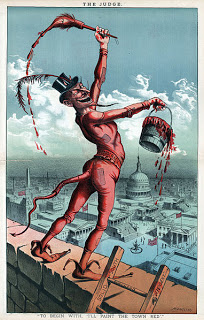
Who’s the loser in this brackish stink?
Not the charlatans
or paid-for shills.
We’re the ones who recoil and shrink.
America the Beautiful,
is this what we hail?
or selfishly hustle
America for sale.
Published on October 26, 2013 11:04
•
Tags:
elections, lobbyists, money, news, political-campaigns, political-spin, politics, propaganda, pundits
October 5, 2013
America's Love Affair with Forgeries and 'Obamacare.'
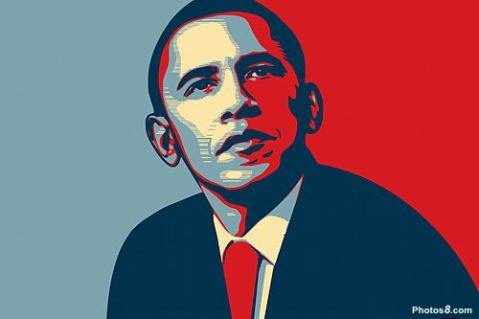 In the USA, Congress is locked in an Orwellian battle over whether to raise the debt ceiling to pay the country’s bills for money already spent, and that means high political drama--and nothing is more dramatic than political smears. America has a long tradition of fabricating false narratives to malign reputations. President Obama is a Kenyan, socialist, communist, and a Nazi. His birth certificate is a forgery, and the worst of all political sins: he’s un-American. Swiftboaters crafted a fiction that Senator John Kerry’s heroic acts in Viet-Nam were false. President Bill Clinton allegedly had his Deputy White House Counsel, Vince Foster, assassinated.
In the USA, Congress is locked in an Orwellian battle over whether to raise the debt ceiling to pay the country’s bills for money already spent, and that means high political drama--and nothing is more dramatic than political smears. America has a long tradition of fabricating false narratives to malign reputations. President Obama is a Kenyan, socialist, communist, and a Nazi. His birth certificate is a forgery, and the worst of all political sins: he’s un-American. Swiftboaters crafted a fiction that Senator John Kerry’s heroic acts in Viet-Nam were false. President Bill Clinton allegedly had his Deputy White House Counsel, Vince Foster, assassinated.But these fake claims are nothing new to American politics. Nixon campaigner, Donald Segretti, stole Democratic letterhead and forged a letter claiming that Senator Henry “Scoop” Jackson was arrested for homosexuality and fathered an illegitimate child with a teenager. Thomas Jefferson was smeared in his campaign as being ‘Godless.’ Civil War hero and squeaky clean northern presidential candidate, Rutherford B. Hayes, was slandered by opponents in the South, who claimed he was an alcoholic, shot his mother, was infected with syphilis, committed income tax fraud, and embezzled the salaries of dead Civil War soldiers.
The ideologically obsessed love to use forgeries to dupe the public into sanctioning acts they wouldn’t approve of, otherwise. In the run-up to the Iraq war, President Bush didn’t have public support for an unprovoked attack. So a group of ex-CIA officers—including former National Security Council and State Department consultant Michael Ledeen--forged a document that claimed Iraq’s president, Saddam Hussein, was seeking yellowcake uranium powder from Niger to build atomic weapons. They fed the forgery to Italian Intelligence officer, Rocco Martino, who then passed it on to the CIA; and it found its way into the National Intelligence Estimate. The false narrative was delivered to the American people in President Bush’s 2003 State of the Union speech to intensify the drumbeat to a prearranged war.
False narratives are flooding the media and internet about the Affordable Care Act. There are the absurd visceral fictions about ‘death panels’ and ‘killing grandma,’ or that you’ll be jailed if you don’t buy healthcare. Senator Rand Paul falsely claimed that you’ll “go to jail” if you don’t buy health insurance and refuse to pay the penalty. And there is the more subtle fictional wordsmithing: Opponents refer to the Act as a ‘bill,’ as though it’s being debated in Congress. It’s not; it’s a law passed three years ago, affirmed by the Supreme Court, and mandated by President Obama’s re-election. What forgers and creators of false narratives count on is that they’ll influence an uninformed and easily-influenced public to act in a way they wouldn’t, otherwise. And you know what? They’re often right.
People may disagree with the law, and vehemently, but there’s a Constitutional procedure to change laws: repeal them by a majority vote. The problem arises when a loud, ideological minority exhausts democratic options, and turns to anarchistic hostage-taking to get their way. In the case of the Affordable Care Act, opponents are only too happy to shut down the government, force it into default, damage the credit of the USA costing taxpayers billions of dollars in higher borrowing costs for decades to come, and subverting the dollar as the world’s reserve currency, not to mention the international humiliation. The shutdown is already costing taxpayers $300 Million every day.
What kind of person would put their own interests above the law and welfare of the country? Representative Michelle Bachmann said regarding the shutdown, "We’re very excited. “It's exactly what we wanted, and we got it.” Representative Marsha Blackburn joked that “…closing down the government will probably help people realize they don't need it.” Schizophrenically, Congressman Randy Neugebauer, an anti-government ideologue who voted for the shutdown, blamed and berated a park ranger at the WWII Memorial for refusing entry to WWII vets, because the Memorial was closed due to Congress’ shutdown. These are the same elected officials who like to proclaim stridently that they’re Constitutional originalists, yet there’s no mention in the Constitution of a debt ceiling. There is, however, this bold proclamation in Section 4 of the 14th Amendment: 'The validity of the public debt of the United States, authorized by law ... shall not be questioned.'
I’m reminded of a quote by an earlier ideologue who greatly valued deception to further the aims of his cause: “For great is the value of deceit, provided it be not introduced with a mischievous intention. In fact action of this kind ought not to be called deceit, but rather a kind of good management, cleverness and skill, capable of finding out ways where resources fail, ...” –Saint John Chrysotom, Archbishop of Constantinople and Doctor of the Church, known as the ‘Golden Throat’
Published on October 05, 2013 12:22
•
Tags:
debt-ceiling, forgeries, obamacare, propaganda
June 1, 2013
Tartuffe by Molière
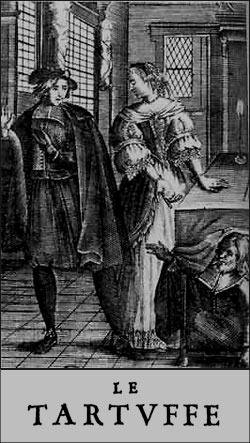 It was great fun to see Molière’s jab at 17th-century church hypocrisy, delivered in his play, Tartuffe, at Reno, Nevada’s Little Theater. I can almost see Louis XIV winking, as he gave his favorite dramatist the nod to excoriate religious greed--that hides behind the guise of piety--in exchange for a plug for the king. If you think the renaissance comedy isn’t relevant in today’s world, think televangelists.
It was great fun to see Molière’s jab at 17th-century church hypocrisy, delivered in his play, Tartuffe, at Reno, Nevada’s Little Theater. I can almost see Louis XIV winking, as he gave his favorite dramatist the nod to excoriate religious greed--that hides behind the guise of piety--in exchange for a plug for the king. If you think the renaissance comedy isn’t relevant in today’s world, think televangelists. The Royal Shakespeare Company’s English version was well done, indeed, and the acting was…well, the translation was very good. The actor who played Tartuffe was excellent, and I could virtually envision the avarice and lechery dripping from his symbols of piety. The supporting actors, on the other hand, rushed their lines and their wooden emotions seemed cartoonish, as though they were performing a Snidely Whiplash and Polly Pureheart, over-the-top melodrama.
Too bad. The director didn’t seem to get that Molière gave the world the best-known comedies in the genre of the ‘comedy of manners,’ a vehicle that Oscar Wilde used so brilliantly. To get the sense of Molière’s wry wit and irony, lines and physical interpretation of emotion have to be delivered sincerely—although perhaps exaggerated--as though the cast are the straight-men counterpoint to Tartuffe’s debauchery. So many times, I had to close my eyes to let the effect of Moliere’s words deliver me, because the cast simply didn’t—with the exception of the superbly interpreted Tartuffe character.
May 10, 2013
A Magnificent Frankenstein
 Last spring, my wife and I took the TGV (bullet train) to Nîmes in the Languedoc-Roussillon region of southern France. It’s a charming city near the Mediterranean, greatly influenced by its Spanish neighbor. Sadly, we arrived a week before the Féria de Pentecôte, when the city hosts week-long bullfights in the ancient Roman amphitheater. After sundown, thousands of visitors flood the streets to party long into the night in the bodegas: temporary bars erected on the wide sidewalks. Next year, we’ll be there, dancing in the streets with other Pentecostal revelers.
Last spring, my wife and I took the TGV (bullet train) to Nîmes in the Languedoc-Roussillon region of southern France. It’s a charming city near the Mediterranean, greatly influenced by its Spanish neighbor. Sadly, we arrived a week before the Féria de Pentecôte, when the city hosts week-long bullfights in the ancient Roman amphitheater. After sundown, thousands of visitors flood the streets to party long into the night in the bodegas: temporary bars erected on the wide sidewalks. Next year, we’ll be there, dancing in the streets with other Pentecostal revelers.Nîmes was an ancient city in southern Gaul that became a Roman colony (Nemausus) around 28 B.C. We were bedazzled by the architecture. The amphitheater lies in the center of town and was built only twenty years after the Roman Colosseum. As we strolled the streets, we marveled that ancient Roman buildings were intermingled with medieval and renaissance structures. Eighteenth- and nineteenth-century apartments were built over Roman foundations, and ruins dot the city.
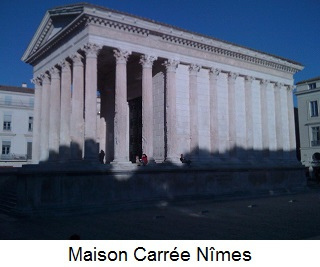 So what does this have to do with my historical fiction that takes place in 9th century Rome? Nîmes has the best preserved Roman temple in Europe. There are virtually no preserved temples in Rome. And Nîmes’ amphitheater is in much better shape than Rome’s Colosseum, even though it’s only twenty years newer. Why? Spoliation: the plundering of ancient buildings for new construction.
So what does this have to do with my historical fiction that takes place in 9th century Rome? Nîmes has the best preserved Roman temple in Europe. There are virtually no preserved temples in Rome. And Nîmes’ amphitheater is in much better shape than Rome’s Colosseum, even though it’s only twenty years newer. Why? Spoliation: the plundering of ancient buildings for new construction.Over the centuries, Rome was the victim of the Goths, Visigoths, earthquakes, fire, and gravity. But the greatest despoilers of the city were its own citizens who pilfered valuable veneers of marble and the best quality stone for churches and towers and country villas. Rome was dismantled stone by stone to turn ancient monuments and temples into a newer Christian city. The Forum, once the center of commerce and politics, was leveled. By the ninth century, it was a pasture where oxen grazed on the grasses.
Even the original Saint Peter’s Basilica was razed. “Nothing from the original church was spared, not a mosaic, fresco, or work of art as laborers tore it to the ground, and the destruction didn’t end there. They demolished countless temples and Roman monuments to provide building materials for the new Saint Peter's. Every single stone and brick and piece of marble was ransacked from ancient buildings that once were marvels of the empire. The basilica was a magnificent Frankenstein, constructed from the bones of pagan temples and monuments to the glories of Rome. Even the altar over the tomb of Saint Peter was cast from bronze pinched from the Pantheon, temple of the old Gods.” (Quotes from The Psalter)
 So if you want to see what ancient Roman temples looked like before its citizens destroyed them to build a Christian city, don’t go to Rome. Go to Nîmes. And while you’re there, stop in at one of the bistros and order some wine. Even the ordinary table wine is exquisite. Better yet, visit during the Féria de Pentecôte. Take in the bullfights then party into the night, dancing and singing in the ancient streets of Nemausus.
So if you want to see what ancient Roman temples looked like before its citizens destroyed them to build a Christian city, don’t go to Rome. Go to Nîmes. And while you’re there, stop in at one of the bistros and order some wine. Even the ordinary table wine is exquisite. Better yet, visit during the Féria de Pentecôte. Take in the bullfights then party into the night, dancing and singing in the ancient streets of Nemausus.
April 22, 2013
Powder Burn by Mark Chisnell
 Powder Burn by Mark Chisnell
Powder Burn by Mark ChisnellMy rating: 5 of 5 stars
A broke, fledgling writer on the verge of returning to her small-town journalist job; an experienced climber and expedition leader; a hot-tempered, adrenaline-addicted snowboarder; a videographer on the verge of bankruptcy--these are the disparate characters that Mark Chisnell has assembled in his Action/ Adventure novel, Powder Burn. What might be an otherwise pure adventure read is spiced up by the mysterious location of the mountain extreme snowboarder,Vegas, plans to conquer; and journalist, Sam (short for Samantha), hopes to publicize, provided she can sell the story.
The intrigue deepens in a separate story line as two other characters flee a fictional, recently occupied Himalayan country, with a mysterious and fabled sword. As the opening chapters progress, the reader suspects, thanks to excellent foreshadowing, that the fate of these two groups is intertwined.
The prose is fluid, visual, and authentic. I could fairly feel my lungs pumping as the characters lug backpacks and gear up a merciless mountain. Author Chisnell created complicated personalities; and the conflicts between them add texture to the story. The characterization of the snowboarder subculture is superb in both their anti-establishment personalities and hip dialogue. I was impressed with the British writer’s technical knowledge, as well as his handling of Yankee vernacular and colloquialisms. The attention to detail puts the reader on the mountain and in every white-knuckle episode as the adventurers race to the shocking secret of the sword and its master.
The story has all the thrills of other climbing/thriller adventures, and I kept imagining Trevanians’s Eiger Sanction meets Toshiro Mifuni in Red Sun. Get out your backpack, rest your head on it next to the fire, and vicariously enjoy an adventure that will leave you panting to get into the mountains.
View all my reviews
Published on April 22, 2013 09:17
•
Tags:
action-adverture, mountaineering, political-intrigue, snowboarding



